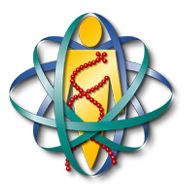Purdue University, School of Health Sciences, West Lafayette, IN 47907-2051
About
Two separate Monte Carlo algorithms are used to simulate the formation and repair of DNA damage. The Monte Carlo damage simulation (MCDS) algorithm is used to predict the initial yield and types of DNA damage formed by ionizing radiation, and the Monte Carlo excision repair (MCER) model is used to simulate repair outcomes, such as correct repair, repair with a mutation (at least one base substitution), and conversion of a clustered damage site into a DSB. Details of the MCER model are described in
- V.A. Semenenko, R.D. Stewart, E.J. Ackerman. Monte Carlo Simulation of Base and Nucleotide Excision Repair of Clustered DNA Damage Sites. I. Model Properties and Predicted Trends. Radiat. Res. 164, 180-193 (2005).
- V.A. Semenenko and R.D. Stewart. Monte Carlo Simulation of Base and Nucleotide Excision Repair of Clustered DNA Damage Sites. II. Comparisons of Model Predictions to Measured Data. Radiat. Res. 164, 194-201 (2005).
An executable of MCER software (version 2.01, March 2006) is freely available for commercial, educational or research purposes. Inquiries about the MCER program and related software should be directed to Dr. Rob Stewart at trebor@purdue.edu.
-
ReadMe.txt file
-
Executable version of the MCER (2006) for MS Windows and sample files (350 kbyte zip file).
-
Sample input file (mcer.inp)
-
Sample output file (mcer.out)
-
Additional input and output files for selected radiations used in microbeam studies of low-dose radiation biology.
-
Monte Carlo Damage Simulation (MCDS) software. Generates DNA damage configurations for selected low and high-LET radiations.
-
Virtual Cell (VC) radiobiology software. Damage repair kinetics, cell killing, neoplastic cell transformation and related quantities (e.g., TCP) for any type of exposure scenario, including split-dose experiments, multi-fraction radiation treatments and brachytherapy exposure scenarios.
Acknowledgement
Research supported by the Low Dose Radiation Research Program, Biological and Environmental Research (BER), U.S. Department of Energy, Grant Nos. DE-FG02-03ER63541, DE-FG02-03ER63665.

U.S. Department of Energy, Low Dose Radiation Research Program. Science in Support of Radiation Risk Policy.